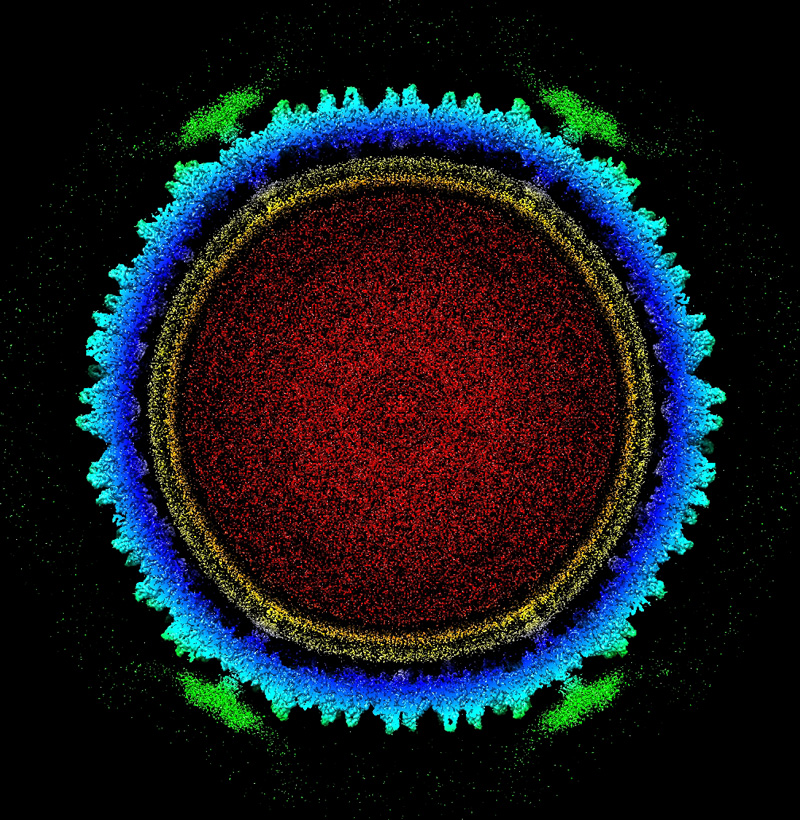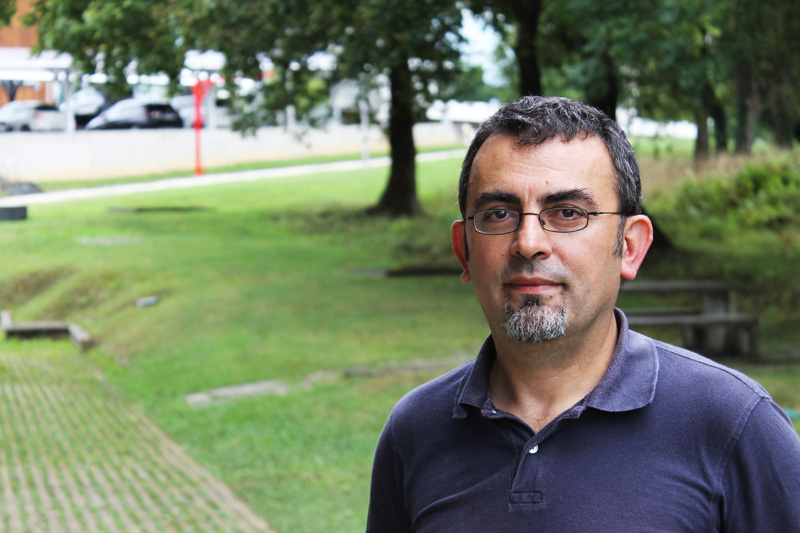
2019/04/08
CIC bioGUNE researchers decode new extremophile viruses whose assembly is related to human viruses
The researchers have studied two viruses which live in salt lakes and have an extraordinary survival capacity, and are crucial in understanding some of the viruses of today.
The work, published in the journal Nature Communications, is a major step forward in addressing new research to combat infectious processes related to viruses that infect other organisms, including humans.
A team from CIC bioGUNE, led by the Ikerbasque researcher Nicola G.A. Abrescia, has decoded the three-dimensional structure of two viruses which live in extreme conditions. Research on the Haloarcula californiae icosahedral virus 1 (HCIV-1), from the saltern of Samut Sakhon in Thailand, and the Haloarcula hispánica icosahedral virus 2 (HHIV-2), from the saltern of Margherita di Savoia in Italy, has made it possible to decode the solution that evolution has provided for their assembly.
In collaboration with the group led by Dennis Bamford and Hanna Oksanen at the University of Helsinki (Finland), Dr Abrescia’s group has obtained information on the evolutionary consequences of the fusion of the two proteins that make up the capsid of the virus. In fact, the joining of the two genes that encode for the two capsid proteins into one unique gene has ultimately led to the protein that forms the capsid of other viruses, some without membrane, such as the more dangerous and human-infecting adenovirus.
The results, published in the journal Nature Communications, are a major step forward in addressing new research to combat infectious processes related to viruses that infect other organisms, including humans.
Dr Abrescia explains: “The study has been conducted using cryo-electron microscopy , specifically TITAN super-microscopes were used which are not currently available either in the Basque Country or anywhere else in Spain. We have been able to conclude that, in both cases, two very different proteins, located between the capsid shell and the outer layer of the lipid membrane of the virus, operate as a global positioning system. In the same way as we use our car GPS to get from A to B, these two proteins tell other viral components what to do and where to go: for example, the two proteins that form the capsid, thereby enabling the virus to be correctly assembled”.
Archaea and their corresponding viruses are organisms which live in primitive and extreme environments, such as sulphur craters, salt lakes, hot springs and soda lakes. Their unique survival capacity makes them key for understanding not only the nature of the biota of early Earth but also the viruses that exist today.
The challenge of establishing relations between viruses.
Recent estimates suggest there are over a quintillion of trillion ( 10 31 ) viruses in the biosphere. One millilitre alone of coastal sea water contains a staggering one million ( 10 6 ) viruses. Of all these quintillion of trillion viruses we know only a tiny fraction.
“Many hopes and expectations for improvements in human health stem directly or indirectly from research into viruses, and sometimes of viruses initially perceived to be of negligible biomedical importance; for example, gene editing technology, or the use of adeno-associated viruses for gene therapy, in addition to research directly focused on human viral infections”, Dr Abrescia adds.
The virus world, or virosphere, is immense, and establishing relationships among viruses is challenging. For example, viruses do not leave fossils in the same way as cellular organisms do, so understanding their long-term evolutionary relationships is an intellectual and scientific challenge. However, understanding these viral evolutionary relationships is essential in the same way as why we, as humans, are keen to know our origins – if we know our past, we can understand our present and possibly foresee our future.
The aim of this study is to understand where the viruses we see today come from, and thus be able to predict how they evolve. Moreover, the existence of relations between two different viruses may bring to light key information: for example, if a virus for which there are no drugs can be correlated with one for which drugs exist, the use of similar therapeutic strategies may be contemplated.
About CIC bioGUNE
The Centre for Cooperative Research in Biosciences (CIC bioGUNE), located in the Bizkaia Technology Park, is a biomedical research organisation conducting cutting-edge research at the interface between structural, molecular and cell biology, with a particular focus on generating knowledge on the molecular bases of disease, for use in the development of new diagnostic methods and advanced therapies. CIC bioGUNE has been accredited as a “Severo Ochoa Centre of Excellence”, the highest level of recognition for centres of excellence in Spain.
Further information:
https://www.nature.com/articles/s41467-019-08927-2
https://naturemicrobiologycommunity.nature.com/users/210580-nicola-g-a-abrescia/posts/45546-cryo-em
See a large version of the first picture

See a large version of the second picture





